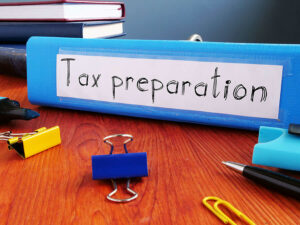
A higher ratio indicates that the company is using its assets efficiently, while a lower ratio suggests underutilization of assets. The Asset Turnover Ratio is more than a performance metric; it’s a strategic indicator that reflects how well a company is converting its resources into value. The ratio helps all stakeholders—CFOs, analysts, investors, and auditors understand how well a company is managing its resources to drive top-line growth. The Asset Turnover Ratio does more than quantify efficiency, it provides insight into how well management is utilizing the company’s assets to support revenue generation.
Financial Statements
Target’s turnover could indicate that the retail company was experiencing sluggish sales or holding obsolete inventory. Fixed assets such as property or equipment could be sitting idle or not being utilized to their full capacity. Here are five real company examples across different sectors, including their financial statements, detailed calculations, and interpretations of their Asset Turnover Ratios. using the information shown here, which of the following is the asset turnover ratio? This ratio is expressed as a number, often to two decimal places, and varies across industries.
- Conversely, firms in sectors such as utilities and real estate have large asset bases and low asset turnover.
- The asset turnover ratio measures a company’s total revenue relative to the value of its assets.
- The Asset Turnover Ratio does more than quantify efficiency, it provides insight into how well management is utilizing the company’s assets to support revenue generation.
- Depreciation is the allocation of the cost of a fixed asset, which is expensed each year throughout the asset’s useful life.
Asset Turnover Ratio vs. Current Ratio

In other words, the company is generating 1 dollar of sales for every dollar invested in assets. The asset turnover ratio measures a company’s total revenue relative to the value of its assets. The asset turnover ratio indicates how efficiently the company is using its assets to generate revenue. In conclusion, while the Asset Turnover Ratio focuses on the company’s ability https://www.bookstime.com/articles/what-is-fixed-cost to use its assets efficiently, the Profit Margin measures its ability to turn revenue into profit. Both are critical metrics, with the former emphasizing operational performance and the latter highlighting profitability. The asset turnover ratio is calculated by dividing net sales by average total assets.

Asset Turnover Ratio – Definition and Formula
The asset turnover ratio can vary widely from one industry to the next, so comparing the ratios of different sectors, like a retail company with a telecommunications company, would not be productive. Comparisons are only meaningful when they are made for gross vs net different companies within the same sector. The asset turnover ratio tends to be higher for companies in certain sectors than others. Retail and consumer staples, for example, have relatively small asset bases but have high sales volume; thus, they have the highest average asset turnover ratio. Conversely, firms in sectors such as utilities and real estate have large asset bases and low asset turnover.

- Comparing the relative asset turnover ratios for AT&T with Verizon may provide a better estimate of which company is using assets more efficiently in that sector.
- For example, retail or service sector companies have relatively small asset bases combined with high sales volume.
- The Current Ratio is another vital liquidity metric that, when compared with the Asset Turnover Ratio, offers insights into a company’s short-term financial health.
- This data is typically found on the income statement and represents the total sales revenue minus returns, allowances, and any discounts offered during the period.
- Calculating the Asset Turnover Ratio is relatively simple, but the accuracy of the result depends on the quality of the data.
Wafeq makes it easy to calculate and monitor key ratios such as Asset Turnover, automatically and in real-time. While the Asset Turnover Ratio is a valuable efficiency indicator, it should not be interpreted in isolation. Like all financial metrics, it has limitations that professionals must consider in context. Understanding the Asset Turnover Ratio is easier when we walk through the calculation process. Just-in-time (JIT) inventory management, for instance, is a system whereby a firm receives inputs as close as possible to when they are needed. So, if a car assembly plant needs to install airbags, it does not keep a stock of airbags on its shelves but receives them as those cars come onto the assembly line.
Asset Turnover Ratio vs. Return on Assets (ROA)

The fixed asset turnover ratio (FAT ratio) is used by analysts to measure operating performance. The total asset turnover ratio is a general efficiency ratio that measures how efficiently a company uses all of its assets. This gives investors and creditors an idea of how a company is managed and uses its assets to produce products and sales. This ratio measures how efficiently a firm uses its assets to generate sales, so a higher ratio is always more favorable.
